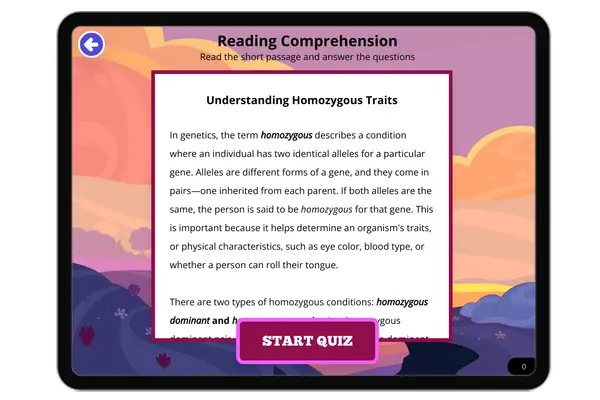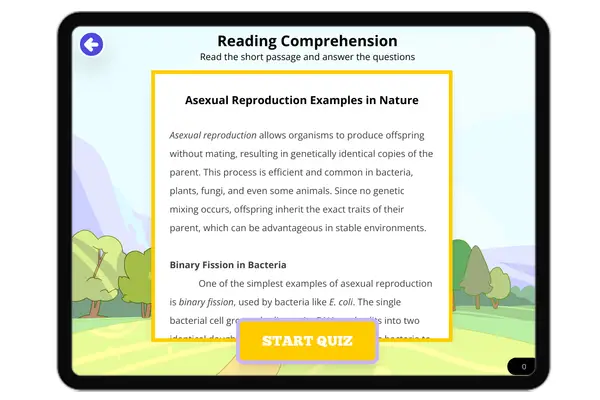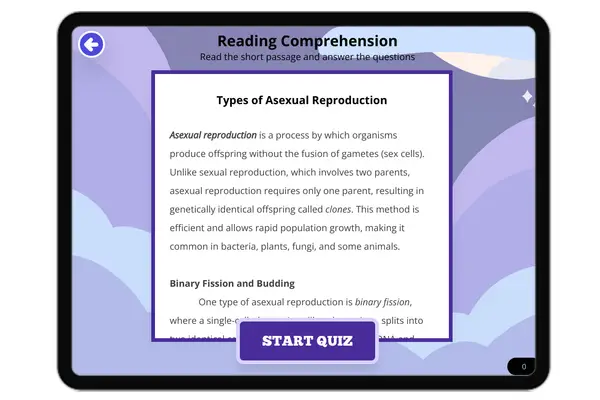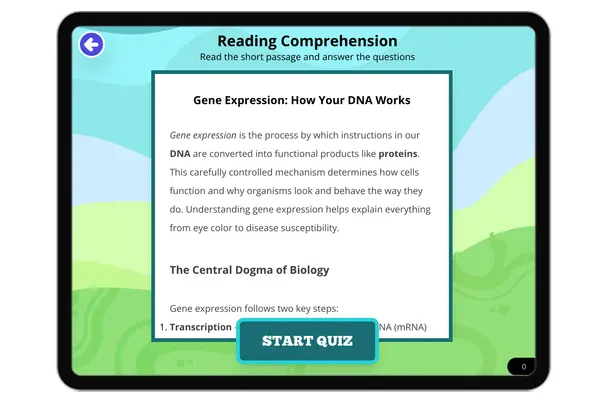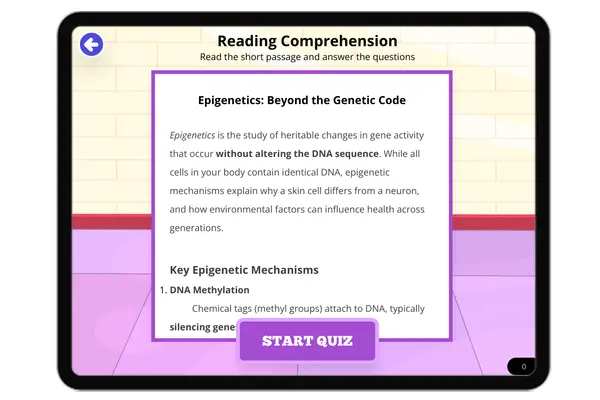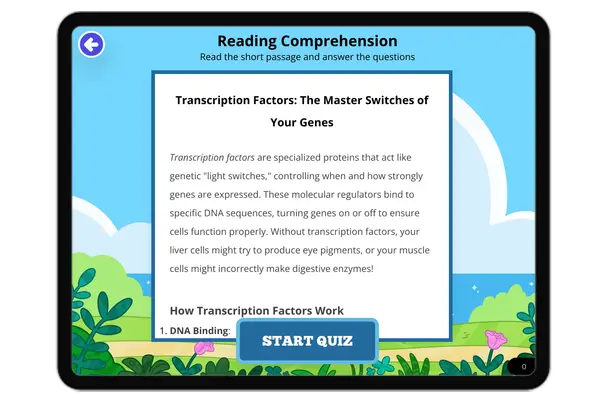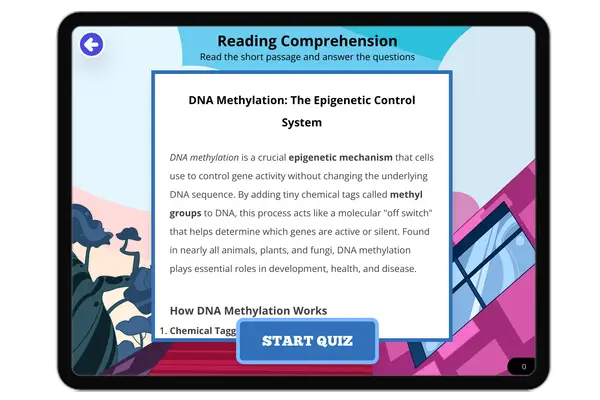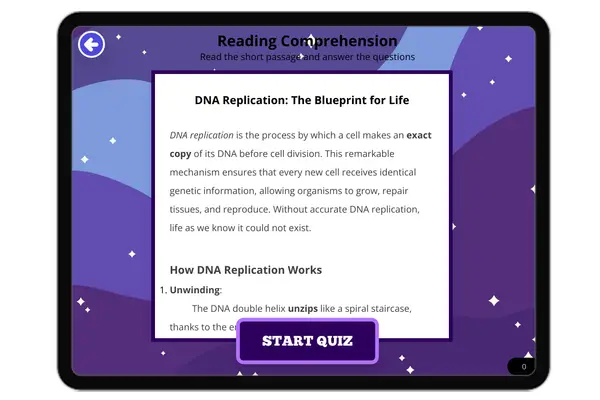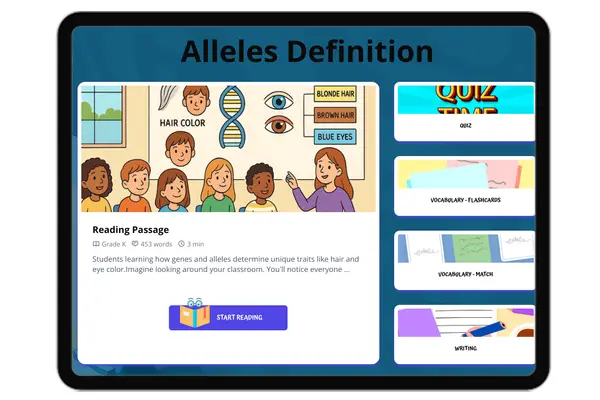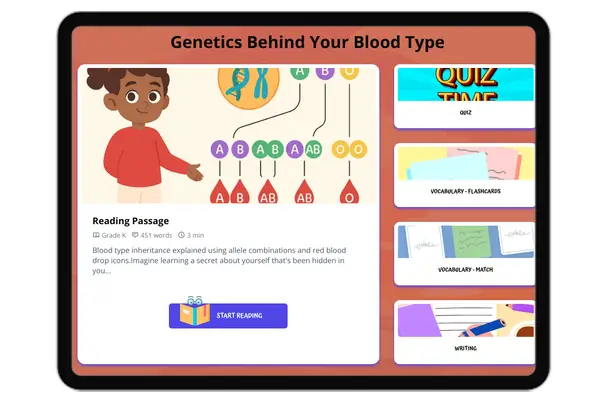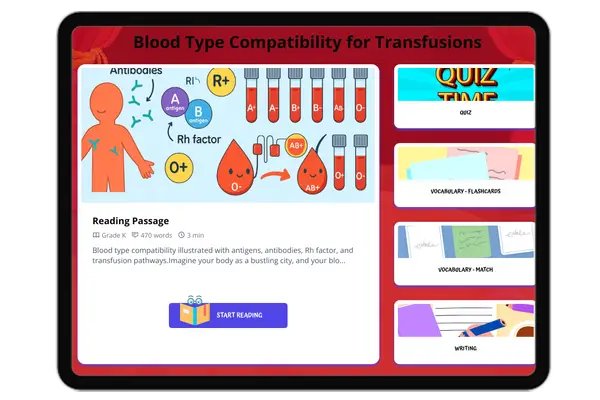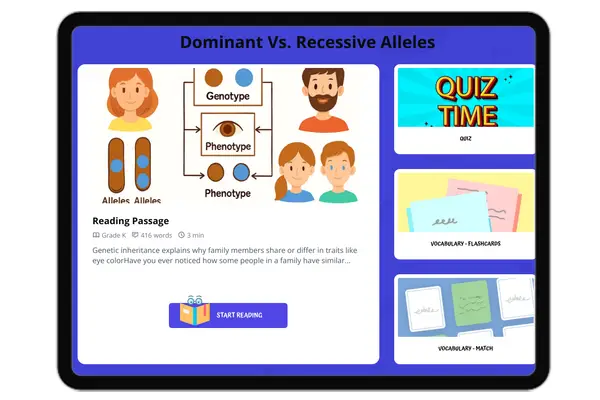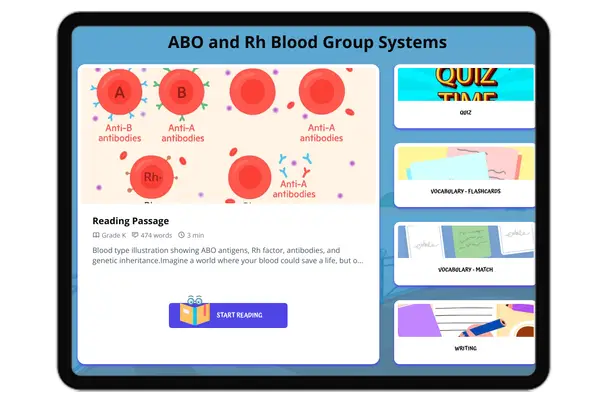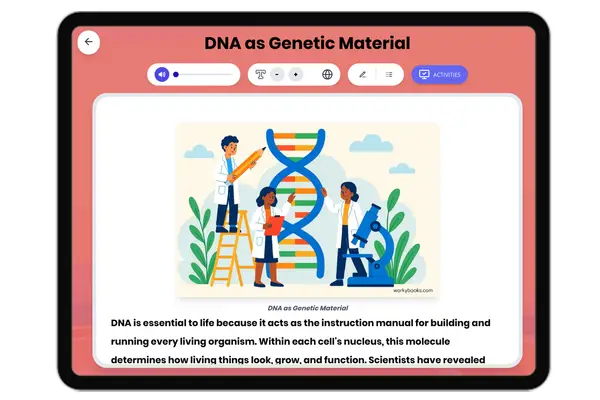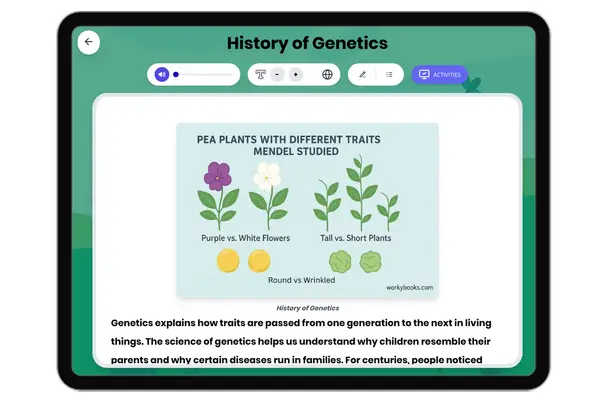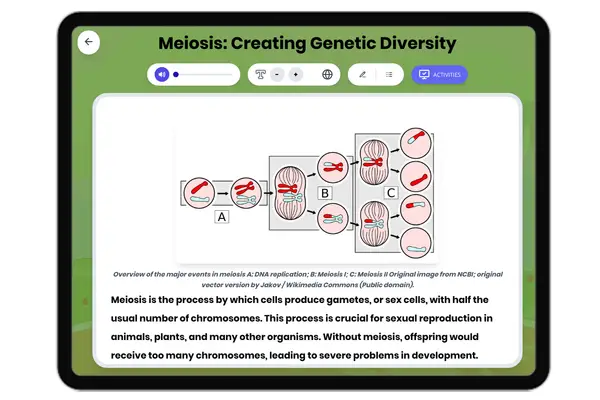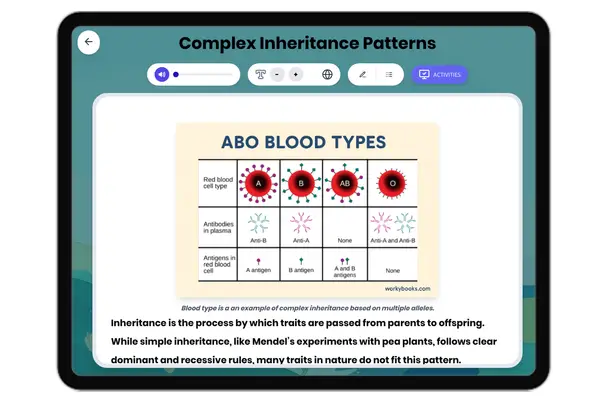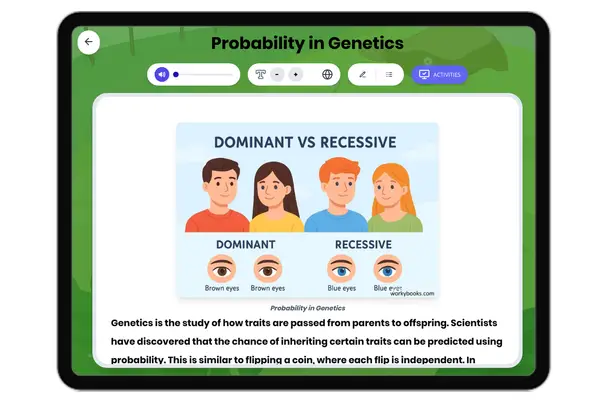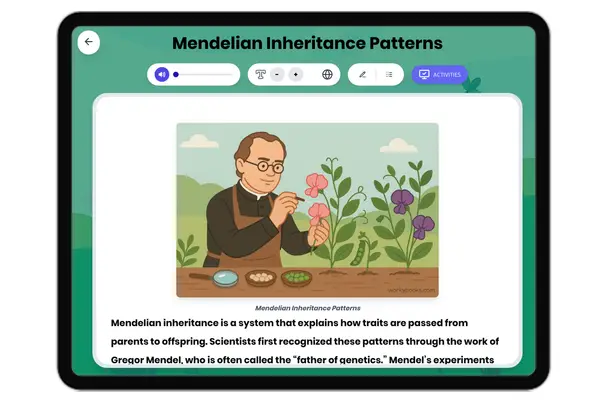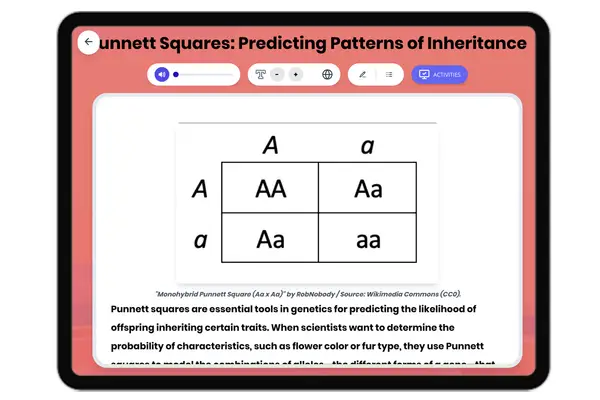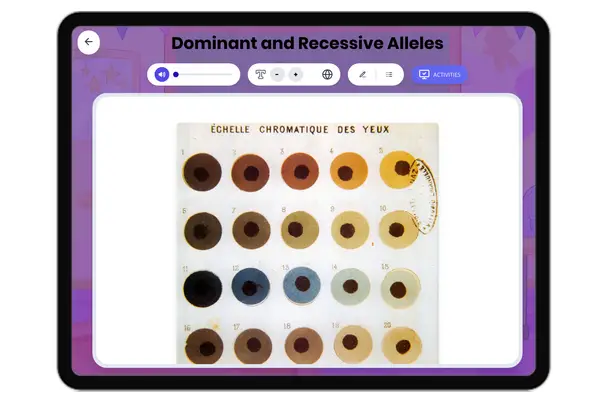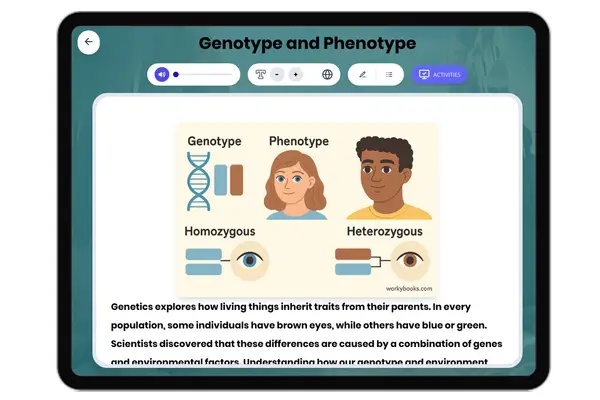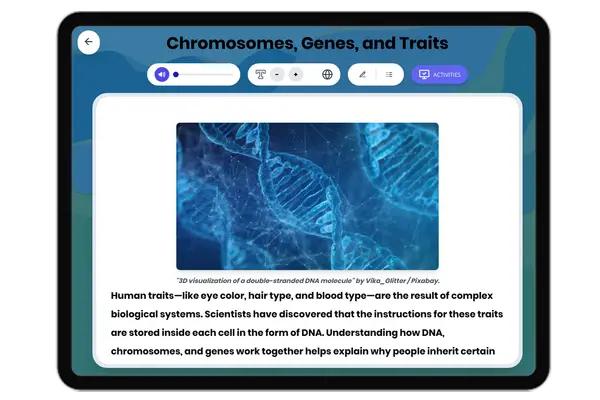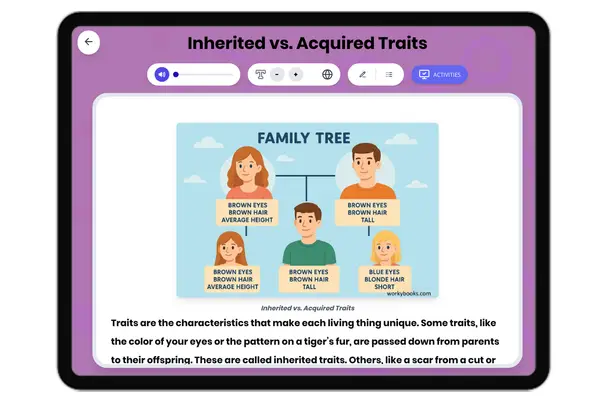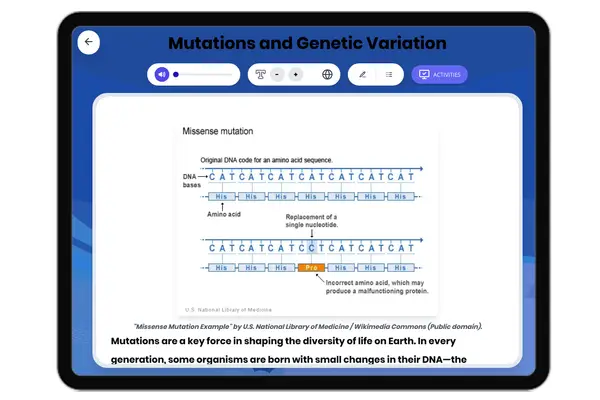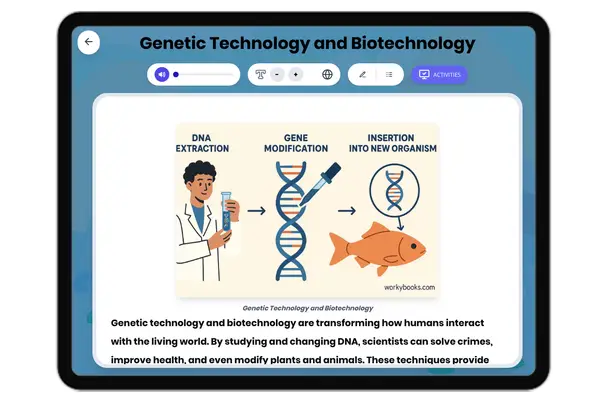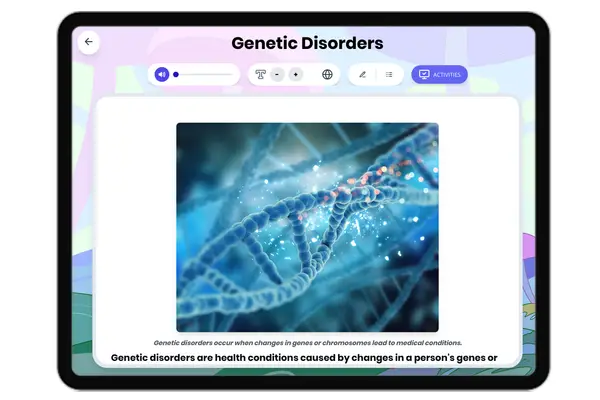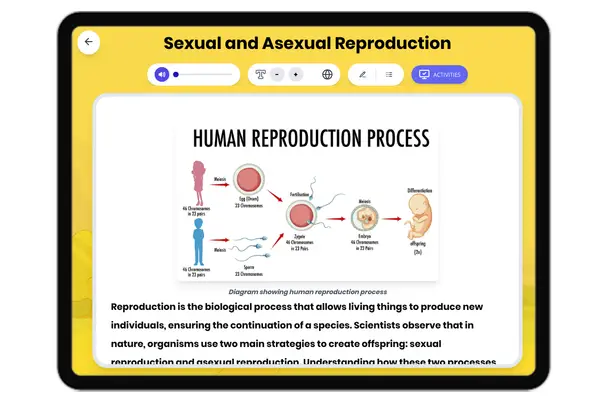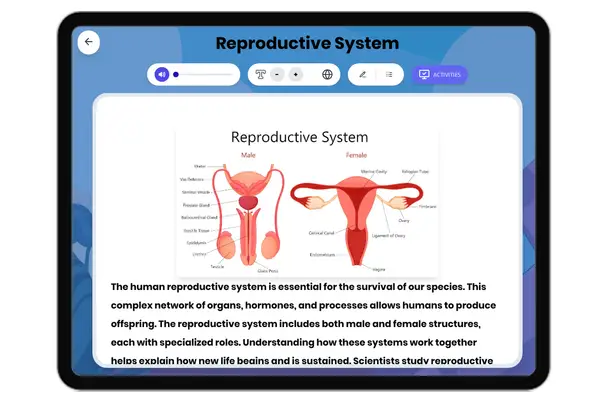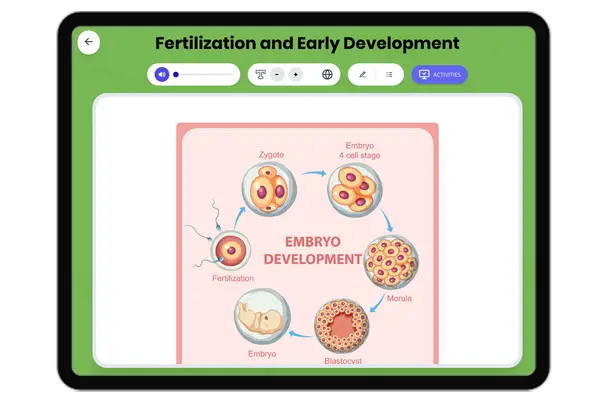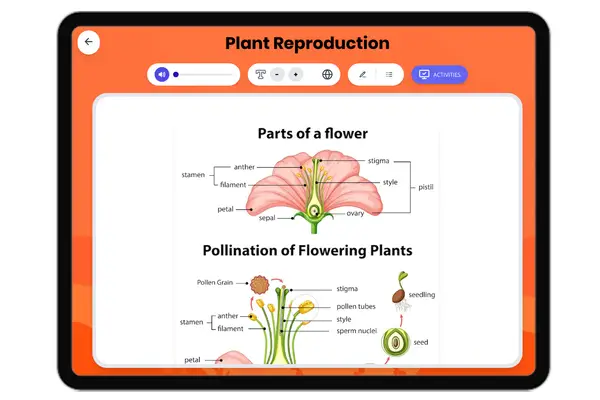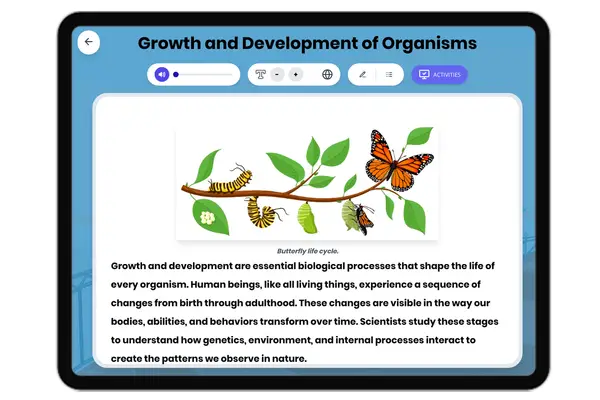Reading Results
Binary Fission: A Simple Way to Reproduce
This science passage explains binary fission, a form of asexual reproduction used by bacteria and some protists. It desc...
MS-LS1-1MS-LS1-2
Understanding Homozygous Traits
This NGSS-aligned science reading passage explains the concept of homozygous traits in genetics. Aimed at middle school ...
MS-LS3-1MS-LS3-2
Inherited Traits and How They Are Passed On
This NGSS-aligned informational passage for middle school explores the concept of inherited traits. It explains how phys...
MS-LS3-1MS-LS3-2
What Does It Mean to Be Heterozygous?
This NGSS-aligned reading passage introduces middle school students to the concept of heterozygous traits in genetics. I...
MS-LS3-1MS-LS3-2
Heterozygous vs. Homozygous: What’s the Difference?
This NGSS-aligned middle school passage explains the difference between heterozygous and homozygous allele combinations....
MS-LS3-1MS-LS3-2
What Is a Genotype?
This NGSS-aligned reading passage introduces the concept of genotype for middle school students. It defines genotype as ...
MS-LS3-1MS-LS3-2
What Is a Phenotype?
This NGSS-aligned reading passage for middle school students introduces the concept of phenotype, which refers to the vi...
MS-LS3-1MS-LS3-2
What Are Alleles?
This NGSS-aligned passage introduces middle school readers to alleles—different versions of a gene. It explains how alle...
MS-LS3-1MS-LS3-2
Predicting Traits with Punnett Squares
This NGSS-aligned science reading passage introduces middle school students to Punnett squares, a key tool in understand...
MS-LS3-1MS-LS3-2
Understanding Self-Pollination
This NGSS-aligned reading passage introduces middle school students to the concept of self-pollination in plants. It exp...
MS-LS3-1MS-LS3-2
How Cross-Pollination Creates Genetic Variety
This NGSS-aligned reading passage for middle school explains the process and importance of cross-pollination in plants. ...
MS-LS3-1MS-LS3-2
Disadvantages of Sexual Reproduction
This NGSS-aligned science passage explains the disadvantages of sexual reproduction for middle school students. Covering...
MS-LS3-1MS-LS3-2
Disadvantages of Asexual Reproduction
This NGSS-aligned science passage explains the disadvantages of asexual reproduction, written for middle school readers....
MS-LS3-1MS-LS3-2
Artificial Selection: Choosing Traits on Purpose
This NGSS-aligned reading passage explains artificial selection, the process of humans choosing which traits to pass on ...
MS-LS3-1MS-LS3-2
Natural Selection: Nature’s Way of Choosing Traits
This NGSS-aligned science reading passage explains the concept of natural selection and how it drives the evolution of t...
MS-LS3-1MS-LS3-2
Adaptations: How Traits Help Organisms Survive
This NGSS-aligned middle school science passage explains the concept of adaptations and how they help living organisms s...
MS-LS3-1MS-LS3-2
Asexual Reproduction Examples in Nature
This science passage highlights real-world examples of asexual reproduction, including binary fission in bacteria, buddi...
MS-LS3-2
Types of Asexual Reproduction
This science reading passage explains the different types of asexual reproduction, including binary fission, budding, fr...
MS-LS3-2
Gene Expression: How Your DNA Works
This passage explains the fundamental process of gene expression, covering transcription, translation, and gene regulati...
MS-LS3-1
Epigenetics: Beyond the Genetic Code
This passage introduces epigenetics, covering DNA methylation, histone modification, and environmental influences like d...
MS-LS3-1
Transcription Factors: The Master Switches of Your Genes
This passage explains how transcription factors regulate genes through DNA binding and protein interactions. Covering ac...
MS-LS3-1
DNA Methylation: The Epigenetic Control System
This passage explores DNA methylation as an epigenetic mechanism that silences genes via methyl group tags. Covering rol...
MS-LS3-1
DNA Replication: The Blueprint for Life
This passage breaks down DNA replication into key steps—unwinding, strand synthesis, and proofreading—while highlighting...
MS-LS3-1
Chromoplast: Nature's Color Palette
This passage details chromoplast functions in pigment production, ecological signaling, and nutrition. Aligned with NGSS...
MS-LS1-1MS-LS1-2MS-LS1-6LS1.C
Alleles Definition
This educational passage, "Alleles Definition," is designed for Grade 6 students and explores the fundamental concept of...
Genetics Behind Your Blood Type
Dive into the intriguing world of human genetics with this audio-integrated reading passage, "Genetics Behind Your Blood...
Blood Type and Transfusions
This engaging and audio-integrated reading passage, 'Blood Type Compatibility for Transfusions,' introduces sixth-grade ...
Dominant Vs. Recessive Alleles
This engaging and audio-integrated reading passage, 'Dominant Vs. Recessive Alleles,' introduces students to the fascina...
ABO and Rh Blood Group Systems
This educational content features a reading passage about the ABO and Rh blood group systems, explaining how different b...
DNA as Genetic Material
This engaging, standards-aligned science passage introduces middle school students (grades 6-8) to DNA as the molecule r...
MS-LS3-1
History of Genetics
This middle school reading passage explores the fascinating history of genetics, tracing the journey from Mendel’s 19th-...
MS-LS3-1MS-LS3-2
Meiosis
This informational passage for grades 6-8 explores meiosis, the cell division process responsible for producing gametes ...
MS-LS3-2
Complex Inheritance Patterns
This informational science passage for grades 6-8 aligns with NGSS standard MS-LS3-2 and explores the mechanisms behind ...
MS-LS3-2
Probability in Genetics
This passage introduces middle school students to the connection between genetics and probability, aligning with NGSS st...
MS-LS3-2
Mendelian Inheritance Patterns
This middle school science passage explores Mendelian inheritance patterns, a fundamental concept in genetics aligned wi...
MS-LS3-2
Punnett Squares
This comprehensive science passage introduces middle school students to Punnett squares, a fundamental concept in geneti...
MS-LS3-2
Dominant and Recessive Alleles
This in-depth, NGSS-aligned science passage for grades 6-8 explores the mechanisms of dominant and recessive allele inhe...
MS-LS3-2
Genotype and Phenotype
This comprehensive middle school science passage explores the relationship between genotype and phenotype, aligning with...
MS-LS3-1MS-LS3-2
Chromosomes, Genes, and Traits
This NGSS-aligned passage for grades 6-8 dives into the relationship between chromosomes, genes, and traits. Students wi...
MS-LS3-1MS-LS3-2
Inherited vs. Acquired Traits
This comprehensive passage, aligned with NGSS standard MS-LS3-1, explores the fundamental differences between inherited ...
MS-LS3-1
Mutations and Genetic Variation
This middle school science passage explores the concept of mutations and their critical role in creating genetic variati...
MS-LS3-1MS-LS3-2
Genetic Technology and Biotechnology
This comprehensive middle school science passage introduces students to the world of genetic technology and biotechnolog...
MS-LS3-1
Genetic Disorders
This comprehensive middle school reading passage introduces students to genetic disorders, focusing on both single gene ...
MS-LS3-2
Sexual and Asexual Reproduction
This NGSS-aligned passage for grades 6-8 explores sexual and asexual reproduction, comparing their underlying mechanisms...
MS-LS1-4MS-LS3-2
Reproductive System
This passage provides a comprehensive overview of the human reproductive system for middle school students, aligning wit...
MS-LS1-3MS-LS1-4
Fertilization and Early Development
This passage explores the scientific process of fertilization and early human development, aligning with NGSS standards ...
MS-LS1-4MS-LS3-2
Plant Reproduction
This comprehensive passage for grades 6-8 explores the fascinating world of plant reproduction, aligning with NGSS stand...
MS-LS1-4MS-LS3-2





